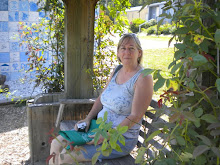“A summer’s sun is worth the having,” claims a French proverb. Solar cooks world wide appreciate the sun, be it summer’s or winter’s sun.
What’s the big deal about using a solar cooker? There are many benefits. Perhaps the greatest benefit, at least here in the United States, is that one can cook without consuming any electricity or natural gas. But during these hot, sweltering days of summer, the added benefit of cooking without heating up the kitchen or house perhaps overweighs the advantage of no energy consumption. According to the Arizona Solar Center (www.azsolarcenter.com), “For every dollar spent on indoor cooking fuel, electricity costing about $.50 is required to cool and dehumidify an air conditioned home. Solar cookers not only use no electricity or natural gas, but they don’t heat-up the house.”
Other advantages are that solar cookers are smoke-free, the moderate cooking temperatures preserve the nutrients of the food, they are easy to use, food doesn’t require stirring and many units are portable and easy to transport.
Commercial models range from $65 for camping sizes up to $300 for more sophisticated versions. Many homemade plans are available and costs run from negligible up to $100, depending on the materials you use and what you have available around the house.
If purchasing a commercial cooker, check the temperature range that the unit will reach. Most cook in the moderate (200 degree) range. These are great for cooking through the day. Set your cooker out before you go to work and come home and dinner is hot and ready for an easy meal. For baking or for faster cooking, you’ll need a model that reaches 300-400 degrees.
My first cooker, a homemade model, wasn’t very successful. I followed the directions: insulated the plywood frame with newspaper, painted the exterior black, lined the interior with foil. However, trying to be frugal (aka cheap), I used the glass tops from two coffee tables that had outlived their usefulness. What DIDN’T dawn on me was that the glass was tinted … as in ‘not letting all the sunshine into the cooker’. Temperatures inside would barely reach 200 degrees, and that was on a good day.
Another mistake; I used a cast iron dutch oven instead of glass or black aluminum pans. Needing long cooking times coupled with cooking in cast iron caused every dish to taste virtually the same, with a heavy iron flavor!
Solar Cookers International claim that two billion people worldwide rely on wood and charcoal for cooking fuel, with many needing to travel long distances to gather dwindling resources. Solar cookers provide an easy cooking method, conserving natural resources in poverty stricken nations. The cookers also can be used to pasteurize water, sanitize dishes and utensils, and disinfect medical supplies.
Following the Haiti earthquake, Solar Cookers International (solarcookers.org) received donations that allowed them to train and equip displaced families with 400 Cookits, pots and water pasteurization units.
Many solar energy centers hold annual events showcasing solar cookers, demonstrating cooking and holding cooking contests. The Arizona Solar Center hosts an annual Solar Cookoff and Expo in Bisbee, Arizona. In 2007, I attended and thoroughly enjoyed myself. I wandered around the Bisbee Farmers Market, seeng solar cookers set up and scattered throughout the park, simmering away amid music and drums and the buzz of pleasant conversation of like-minded peoples.
This pollution free, energy saving, heat reducing cooking method isn’t new. It’s certainly a trend whose time has arrived. It’s eco-living one step at a time. It’s a lifestyle. It’s a green thing.
Subscribe to:
Post Comments (Atom)



No comments:
Post a Comment